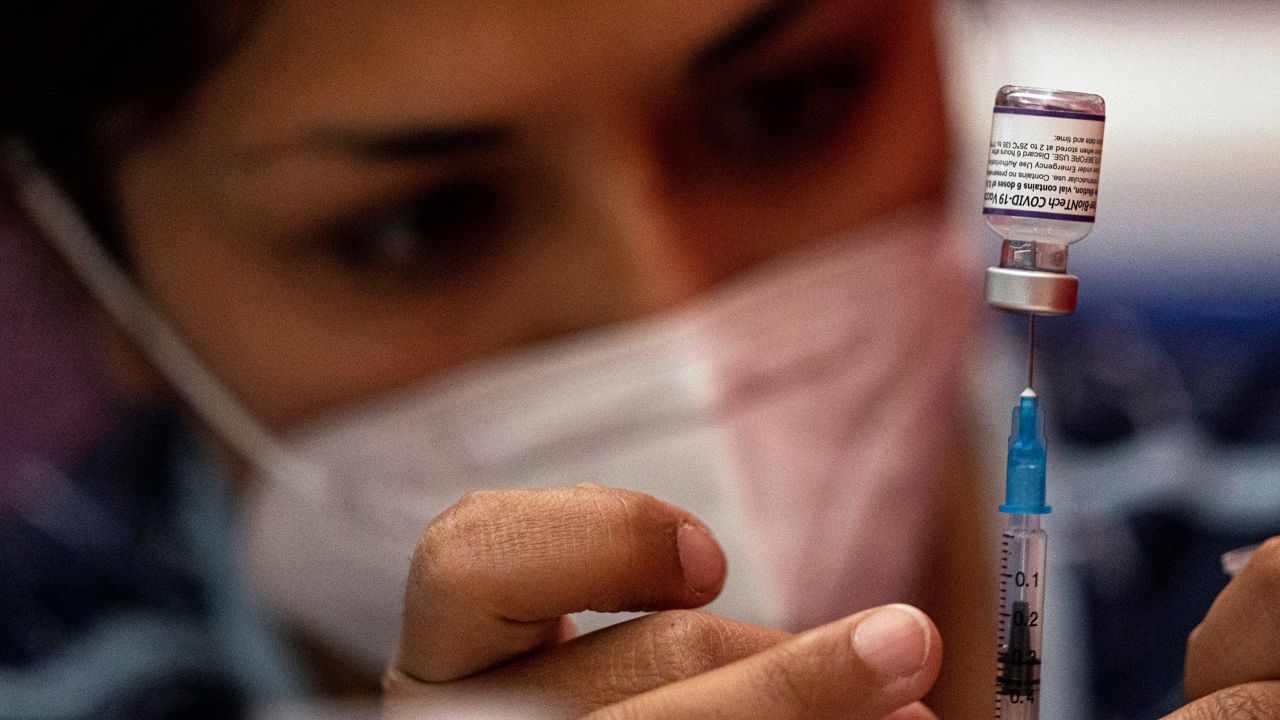COLUMBUS, Ohio — Vaccine providers in Ohio are seeing a reduced demand for first doses and booster shots in the aftermath of the omicron wave.
What You Need To Know
- Experts think residents who recently contracted COVID-19 are less likely to get vaccination
- The lower case numbers are also contributing to the slowing pace of immunizations
- The state is working with local health departments to identify subpopulations with low uptake
The state reported only 7,460 new first doses in the last week, according to a Thursday update from the Ohio Department of Health, which was the first full week of data since the department transitioned to weekly updates.
Zelalem Haile, epidemiology professor at Ohio University Heritage College of Osteopathic Medicine in Dublin, said residents are less likely to get vaccinated when they aren’t as worried about the risks of the disease.
“One of the main reasons is, of course, the decline in the number of COVID cases, the decline in hospitalizations, the decline in mortality,” he said in an interview.
Haile, who led a study published last month on vaccine hesitancy among Ohioans, said residents who contracted COVID-19 during the omicron wave may feel protected with the antibodies from their infection, making them less likely to get vaccinated.
He also noted that employers in Ohio have dropped vaccine mandates and requirements for unvaccinated employees to wear masks. And over time, as more residents get vaccinated, there are simply fewer and fewer people on the fence, which will naturally lead to the administration of fewer first doses.
But vaccine providers across the state are still determined to boost the vaccination rate in Ohio, which stands at 62% for starting the vaccine series and 58% for completing vaccination.
Ohio’s first-dose vaccination rate ranks 43rd of U.S. states, according to Bloomberg’s vaccine tracker, which shows that new vaccinations in Ohio and nationally have dropped to the lowest levels since the beginning of the rollout.
While metropolitan areas in Ohio, including Franklin, Cuyahoga and Hamilton counties, have vaccination rates between 65 and 68%, many rural counties are below 50%, Ohio Health Director Dr. Bruce Vanderhoff said during a news conference Thursday.
“Likewise, our school-aged children are lagging behind in their vaccination rates. Among Ohio's children ages 12 to 15, the rate is 43%, and among those 5 to 11, it's only 22%,” he said.
Vaccinations were authorized at later dates for younger Americans, but Haile said the lower rates have just as much to do with perceptions of risk vs. reward.
“For younger individuals, their hesitancy, you can link it to their lower perceived risk. They think they’re not going to get severe illness, they think COVID is not going to be serious for them,” he said.
From surveying thousands of Ohioans, Haile and his colleagues also found racial and ethnic disparities in vaccine hesitancy, which comports with the low rates of vaccination.
“Nationally, if we look at the data, we are closing the gap in racial disparity in terms of vaccine, but if you look at Ohio, the gap is still out there. There’s still a 10% difference between non-Hispanic whites and African Americans in terms of coverage,” he said.
These gaps are related to distrust based on historical mistreatment, lower levels of education and vulnerability to misinformation on social media, Haile said.
Vanderhoff said that with vaccination numbers lower, the Ohio Department of Health is looking at access issues, and trying to create more opportunities to get the shot in areas where rates are the lowest.
“Now, we're faced with a challenge of identifying and understanding our opportunities to lower the threshold of difficulty for people to get vaccines,” he said. “What can we do to just make it so much easier for people to get vaccinated?”
The state is sharing data analysis with local health departments regarding subpopulations that are at the greatest risk.
Going forward, Haile said vaccine education during routine primary care visits could be a key to getting more residents vaccinated, but he said primary care providers need more training on how to talk with patients about the vaccine.
“Believe it or not, there are many doctors out there who are having difficulty in helping patients, or communicating with patients about accurate vaccine information,” he said.
Beyond focusing on the primary care interaction, he said it’s critical for organizations in the state to hold “listening sessions” to understand demographic-specific concerns about the vaccine.
“Whether it's racial minorities, whether they're immigrants, whether they are rural communities, we have to be able to listen to their concerns to have a sound understanding of their specific experiences and perceptions that led to their decision not to get vaccinated,” he said. “This will shed some light into some of the barriers.”



